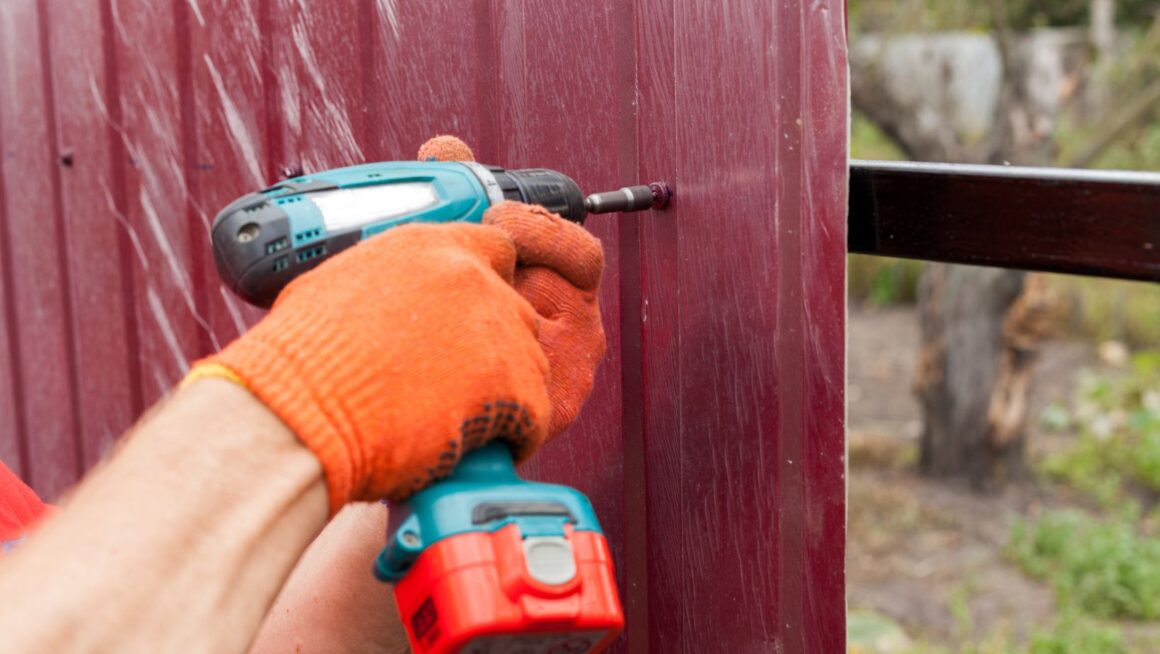When investing in a new fence for your property, you want to ensure you’re getting your money’s worth and won’t need to replace it anytime soon. So it’s natural to wonder: what’s the average lifespan of a wooden fence?
A properly maintained wooden fence typically lasts 15 to 20 years, with pressure-treated pine and cedar fences being the most common varieties in residential settings.
However, this average lifespan can vary significantly depending on several crucial factors, including the type of wood used, local weather conditions, and maintenance practices. Understanding these variables can help you either extend your fence’s life well beyond the average or know when you might need to replace it sooner.
What Factors Affect A Wooden Fence’s Lifespan?
The type of wood used in your fence significantly affects its longevity. Cedar naturally resists decay and insects, potentially lasting up to 30 years with proper care. While less expensive, pressure-treated pine can last 15-20 years thanks to chemical treatments that protect against rot and insect damage.

Climate and weather conditions in your area significantly impact fence durability. Fences in high humidity and rainfall regions are more susceptible to moisture damage and rot. Similarly, areas with extreme temperature fluctuations can cause wood to expand and contract, leading to warping and cracking over time.
How Can You Extend Your Wooden Fence’s Life?
Regular maintenance is the key to maximizing your fence’s lifespan. Apply a water-repellent sealant every 2-3 years to protect against moisture damage. Clean the fence annually using a power washer to remove dirt, mold, and mildew that can accelerate deterioration.
Inspect your fence regularly for signs of damage, such as loose boards, protruding nails, or rotting posts. Address these issues promptly to prevent them from becoming larger problems that could compromise the entire structure.
What Are The Warning Signs That Your Wooden Fence Needs Replacement?
Several clear indicators suggest it’s time to replace your fence. Extensive rotting, especially at the posts, is a serious structural concern that often can’t be effectively repaired. If over 20% of the boards are warped, cracked, or rotted, replacement is usually more cost-effective than repairs.
Leaning sections or posts that wobble when pushed indicate foundation issues, often due to soil erosion or post rot below ground level. While individual posts can sometimes be replaced, multiple failing posts usually signal the end of a fence’s helpful life.
How Much Does It Cost To Replace A Wooden Fence?
The average fence install and replacement cost ranges from $15 to $30 per linear foot, including labor and materials. For a typical 150-foot residential fence, homeowners can expect to pay between $2,250 and $4,500. However, costs can vary significantly based on fence height, wood type, and local labor rates.

Premium wood options like cedar or redwood will push costs toward the higher end of the range, while pressure-treated pine offers a more budget-friendly alternative. Additional features like decorative post caps, gates, or special treatments will also increase the price.
Should You Choose A Different Fencing Material For Longer Lifespan?
While wooden fences offer natural beauty and traditional appeal, alternative materials like vinyl and metal can last significantly longer. Vinyl fencing typically lasts 30-50 years with minimal maintenance, and aluminum fences can last a lifetime. These materials also resist problems common to wood, such as rotting, warping, and insect damage.
However, these alternatives come with trade-offs. Vinyl and metal fencing generally cost more upfront than wood, and some homeowners find their appearance less attractive or authentic. Additionally, when damaged, these materials often require complete panel replacement rather than simple board repairs that are possible with wood.
Consider your priorities regarding maintenance time, long-term costs, aesthetic preferences, and durability when deciding between wood and alternative materials. Sometimes, the shorter lifespan of wood is worth it for its classic look and lower initial investment.
Your Next Move
If your existing wooden fence is approaching the 10-year mark, now is the perfect time to thoroughly inspect your fence posts, boards, and hardware using the warning signs outlined above. This proactive assessment will help you plan ahead financially and determine whether you should start budgeting for repairs, maintenance, or a complete replacement in the coming years.


